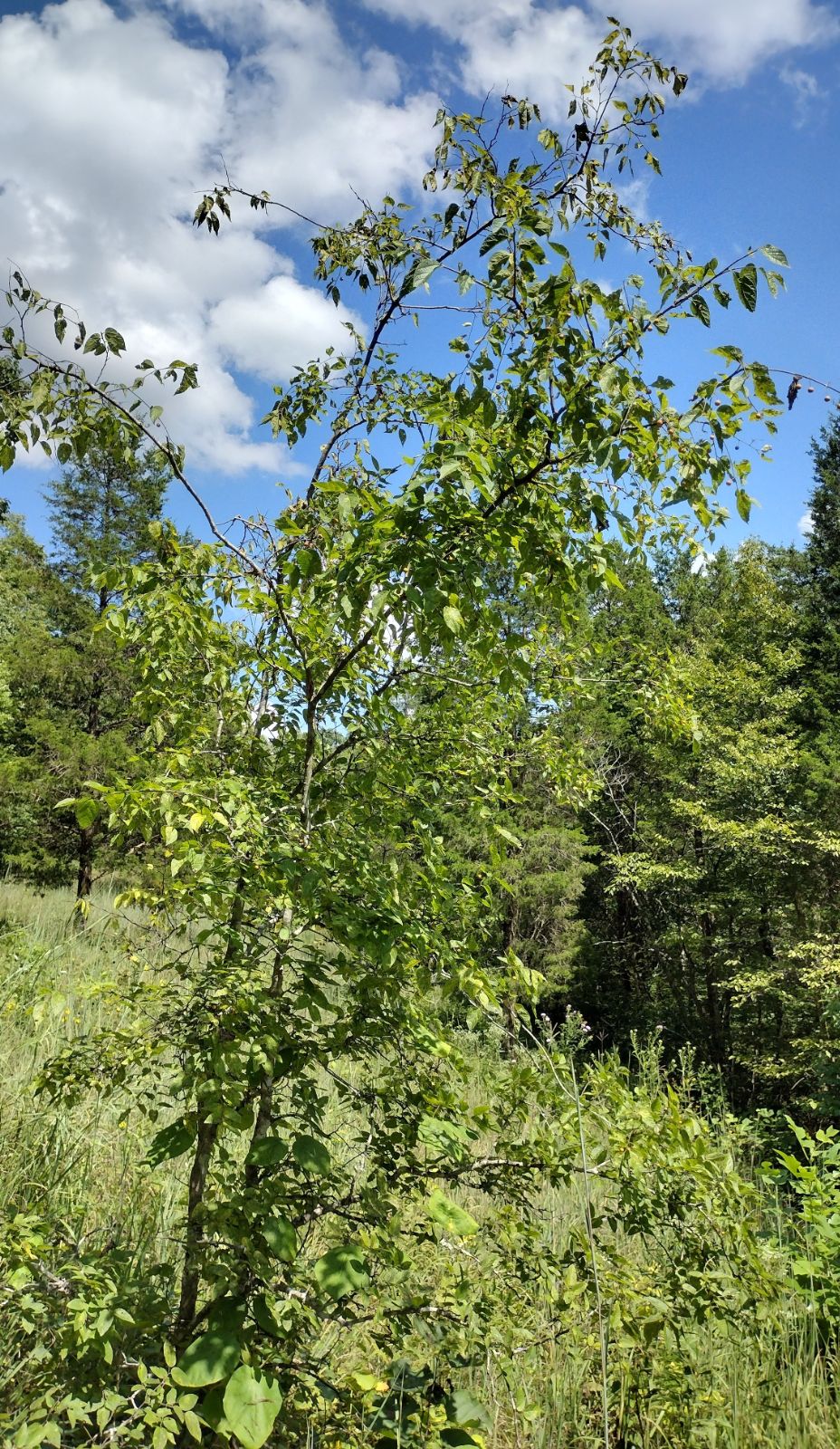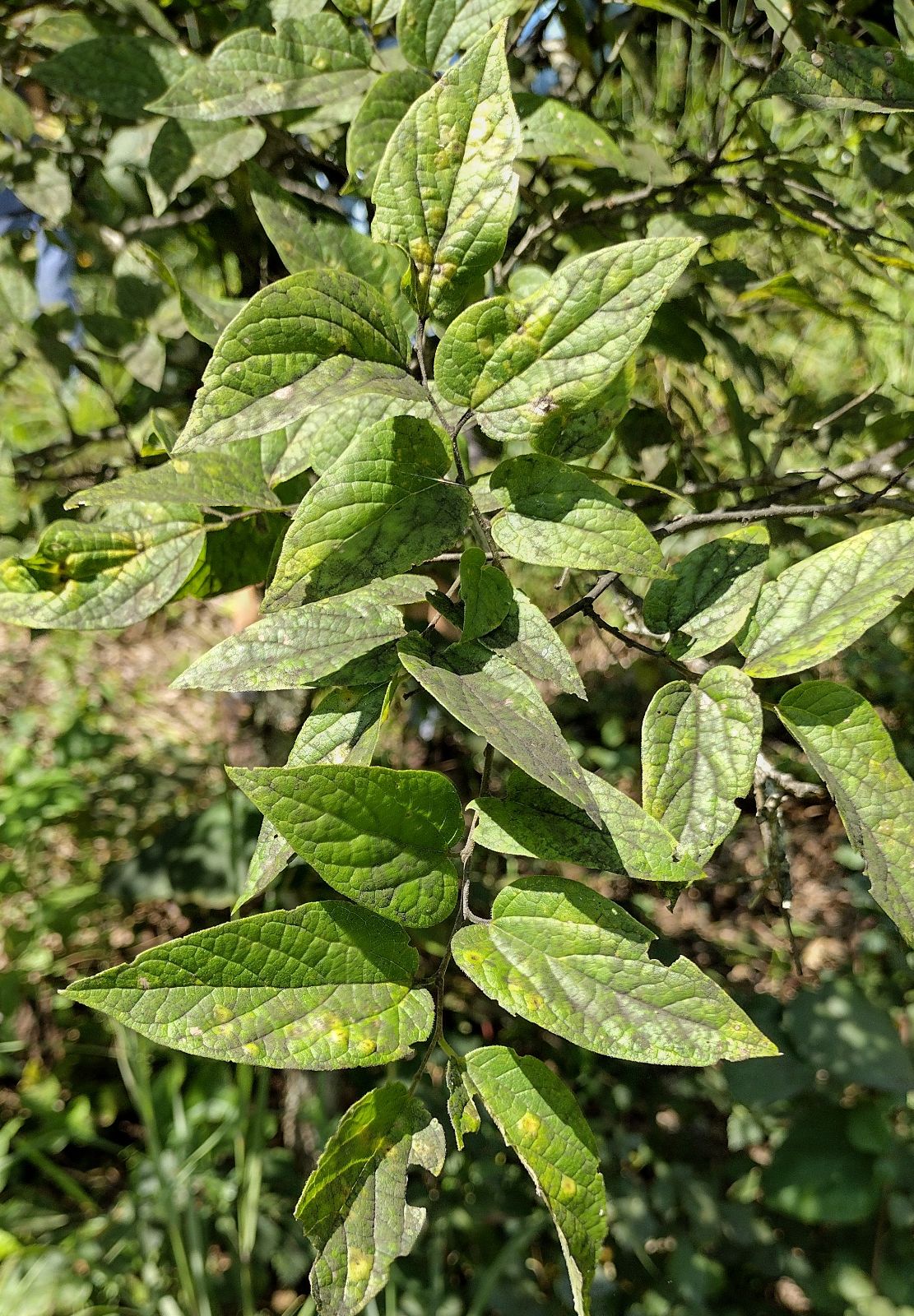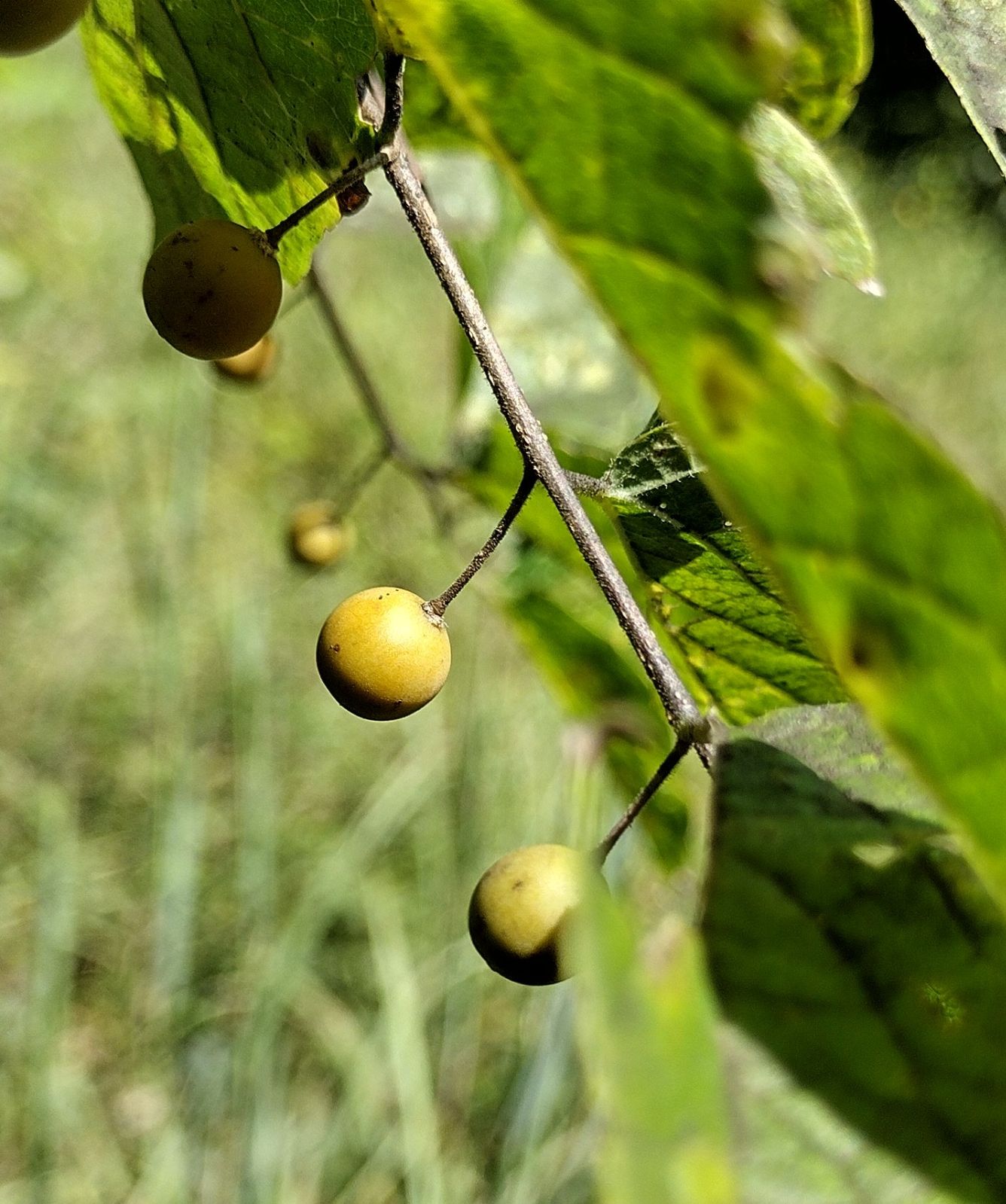Celtis tenuifolia
Credits
Article from New Trees by John Grimshaw & Ross Bayton
Recommended citation
'Celtis tenuifolia' from the website Trees and Shrubs Online (treesandshrubsonline.
Shrub or small tree to 10 m, dbh 35 cm or more; trunk short, as branching occurs early. Bark pale grey-brown, often warted, sometimes forming heavy plates. Branchlets green to reddish brown and pubescent, later glabrous; at maturity, bark light grey with distinctive ridges. Stipules absent. Leaves deciduous, alternate, 2.5–7 × 1.5–4 cm, broad at the base, ovate to cordate, leathery or papery, upper surface dark green, glabrous and rough to the touch, lower surface pale green, with conspicuous pubescence, three to four (to five) secondary veins on each side of the midvein, margins entire or with a few large teeth on each side, apex acuminate; petiole slender, 0.6–1.1 cm long, pubescent. Flowers greenish yellow, solitary or in sparse clusters. Infructescences solitary, unbranched. Fruit 0.7–1 cm diameter, orange-red to reddish brown. Flowering April to May, fruiting September to October (USA). Elias 1980. Distribution CANADA: Ontario; USA: Alabama, Arkansas, northern Florida, Georgia, Illinois, Indiana, Kansas, Kentucky, Louisiana, Maryland, Mississippi, Missouri, North Carolina, Ohio, eastern Oklahoma, southeastern Pennsylvania, South Carolina, Tennessee, eastern Texas, Virginia, West Virginia. Habitat Dry, rocky or gravel-rich soils in the foothills, particularly in the Piedmont, southeastern USA. USDA Hardiness Zone 4. Conservation status Not evaluated. Illustration Elias 1980. Cross-reference K308.
Celtis tenuifolia is highly regarded by Sternberg (2004), who considers it to be a characterful tree suitable for small gardens. As a native of rocky places it is slow-growing (9 m in 30 years at Starhill Forest Arboretum) and tolerant of adverse conditions. It colours a good yellow in autumn, and its silvery brown bark and intricate branching pattern make the winter silhouette attractive.
Celtis tenuifolia has been grown at Kew since 1900 (this plant was obtained originally from the German nursery firm of Späth), and there is another old tree at Wakehurst Place. The Kew tree is 10–12 m tall, dbh 35 cm, with somewhat pendent branches from ascending main stems. In addition to the Starhill Forest tree, American collections often have good specimens, and where conditions are particularly favourable it need not be slow-growing. A 10 m tree at the JC Raulston Arboretum was planted in 1998 and looks set to be large and shady in maturity. It has grown well at Rogów Arboretum since 1961 (P. Banaszczak, pers. comm. 2007), and would seem to be an excellent tree for continental climates.



